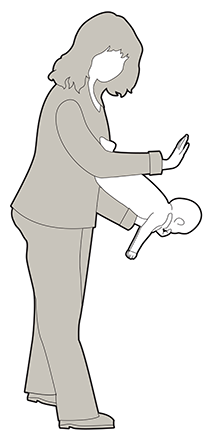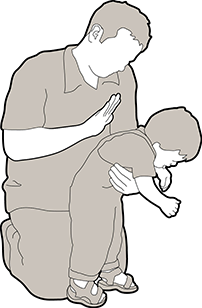Choking
How to deal with a choking baby or child is a skill all parents should know.
Remember: The procedure is slightly different for babies (under one) and children (aged one to puberty). Follow the steps below:

For a baby (birth to one):
- If the baby is unable to cough up the obstruction, lay them face down along your forearm (with their head low) and support their body and head.
- Using the heel of your hand, give up to five back blows between their shoulder blades.
- Turn them face up along your other forearm, supporting their body and head and check their mouth for any dislodged objects.
- If they are still choking, place two fingers on the lower half of the baby's breastbone (a finger's breadth below the nipples) and give up to five sharp thrusts, inwards and towards the head.
- Check the mouth for any dislodges objects.
- Give three full cycles of back blows and chest thrusts, checking the mouth after each full cycle.
- If this does not work call an ambulance and repeat the back blows and abdominal thrusts until help arrives. If the child becomes unconscious, give CPR.

For a child (one to puberty):
- If they are unable to cough up the obstruction, bend the child over and give them five sharp blows between the shoulder blades with the heel of the hand.
- Check the mouth for dislodged objects.
- If they are still choking, give the child abdominal thrusts. To do this place a clenched fist above their belly button and grasp your fist with your other hand. Pull inwards and upwards five times.
- Check the mouth for dislodged objects.
- If they are still choking, give three cycles of back blows and abdominal thrusts. Check the mouth after each cycle.
- If this does not work call an ambulance until and repeat the back blows and abdominal thrusts until help arrives. If the child becomes unconscious, give CPR.